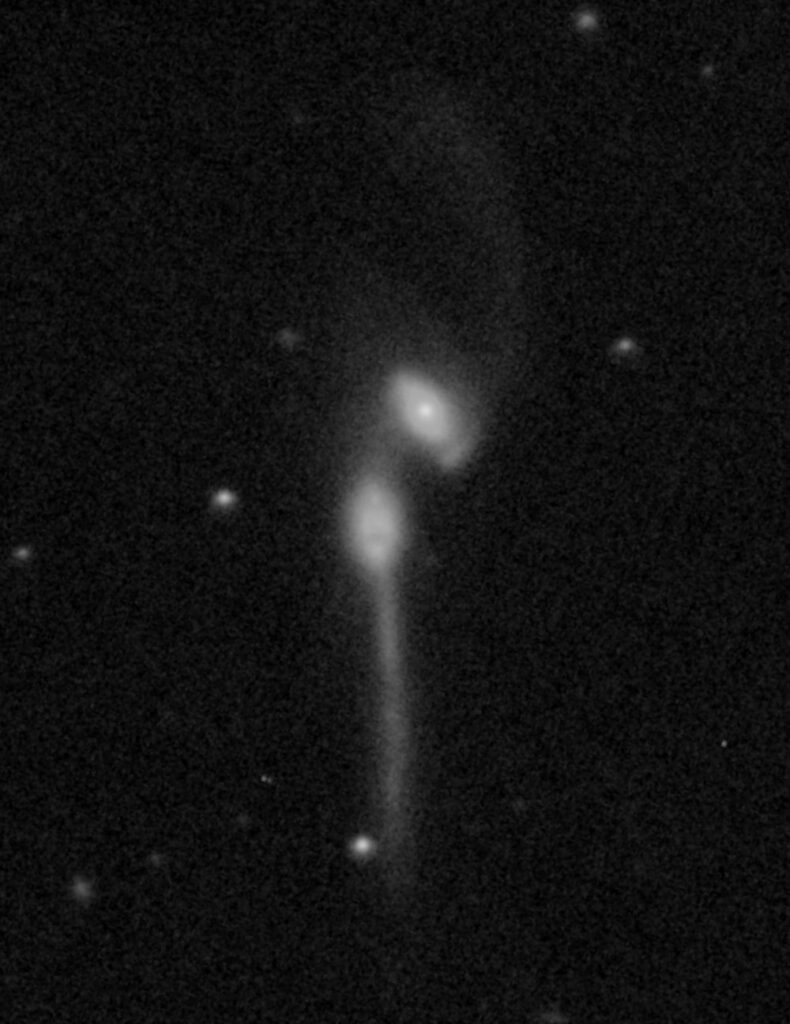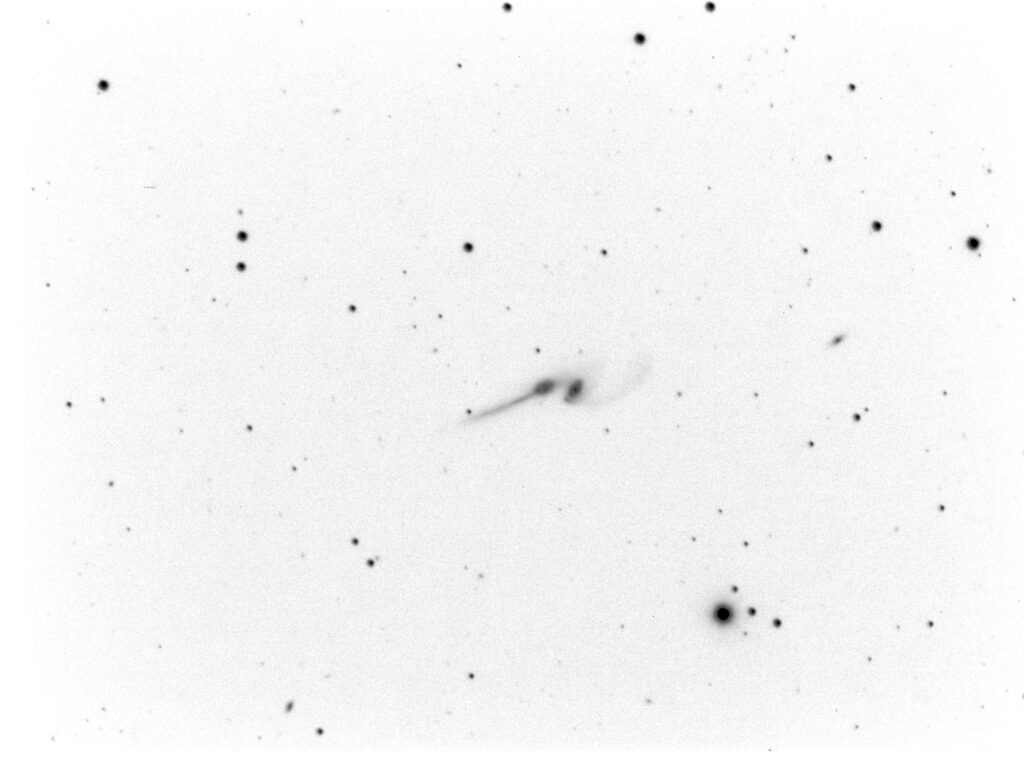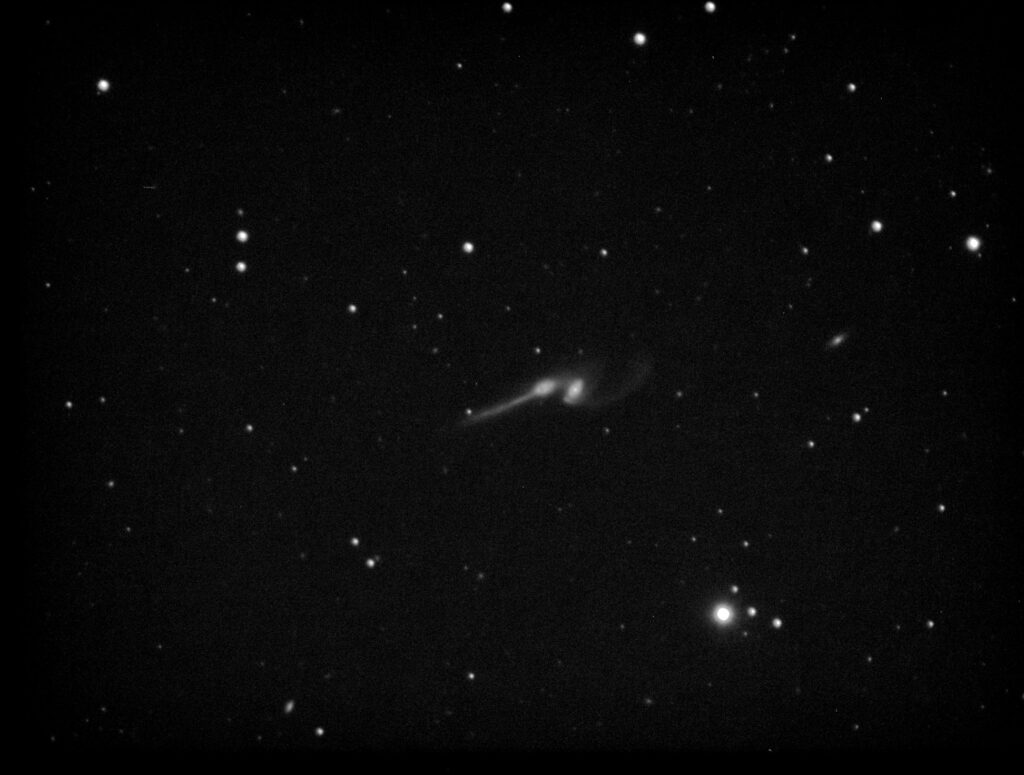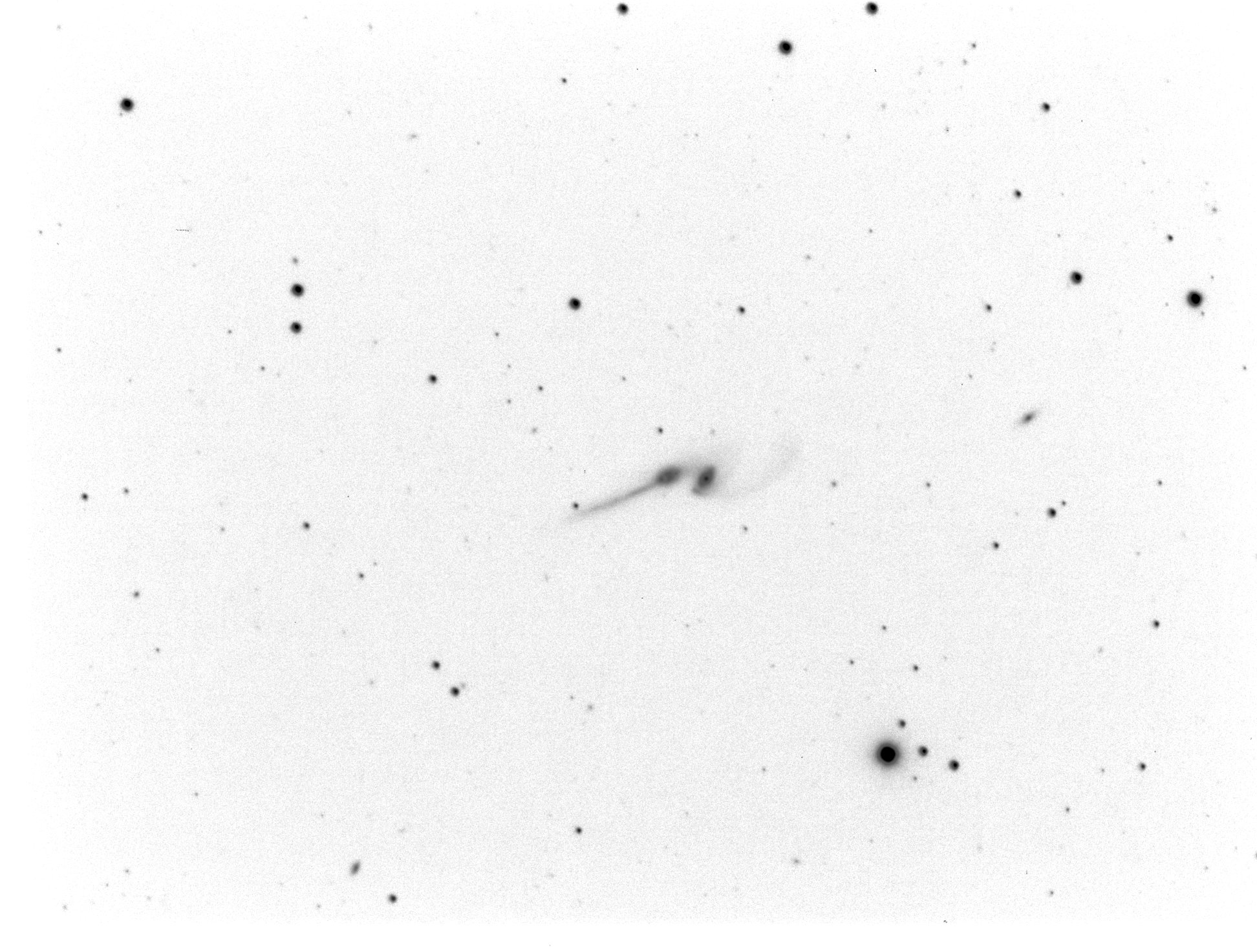| Name | Mice Galaxies |
| Designation(s) | Arp 242, NGC 4676A, NGC 4676 B |
| Object Type(s) | Galaxy |
| Relevant Catalog(s) | All (Chron), Arp, NGC |
| Arp Category | Galaxies with the appearance of fission |
| Obs. Lat/Long | 42° 17', 073° 57' |
| Constellation | Coma Berenices |
| Date and Time Observed | 2025-03-26 01:00:00 |
| Instrument | EdgeHD 8" w/f7 reducer-1,422mm FL |
| Camera | Player One Apollo-M Mini |
| Image Details | Up is 180 E of N in comparison and featured, 110.3 degrees E of N in full FOV . Transparency: Good. Seeing: Fair. Total integration time was 30m. Exposures 30s@305g, UV/IR Cut Filter. Darks subtracted. Dithered and recentered in SharpCap.. |
| Description | We're seeing two small spiral galaxies approaching a merger. The "tails" are tidal tails... the closer ends of the galaxies experience much greater gravitational attraction than the far ends. As the galaxies move towards each other, the far ends leave behind some stars. Arp didn't believe in galaxy mergers which seems strange today. He notes "Very thin, bright tail from north nucleus which has strong absorption," but categorized the peculiarity as the "appearance of fission". How two perfectly formed spiral galaxies could be established from a "fission" seems so much more complicated than the modern consensus that galaxy mergers are commonplace. Arp was observing phenomena which few other astronomers were paying attention to -- indeed he was paddling upstream against the orthodoxy that was trying to identify regularities, not peculiarity. Bottom line, in this case, I think his "fission" idea is dead wrong. But given the state of knowledge at the time, the phenomena were worth pointing out even if the implied explanation was incorrect. A fun capture on a clear night with crummy seeing as evidenced by every visible object twinkling noticeably. |
| Catalog Links | |








